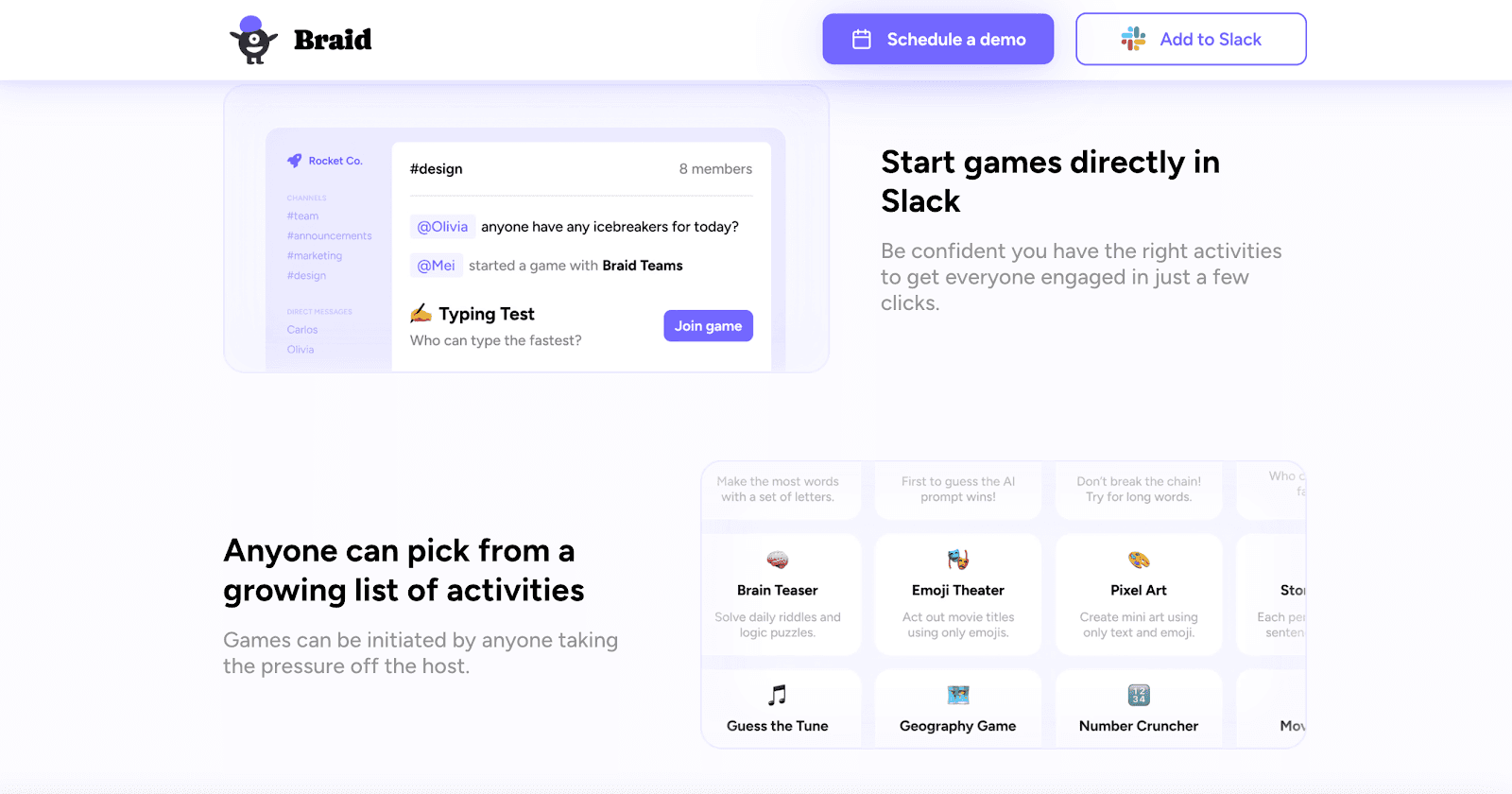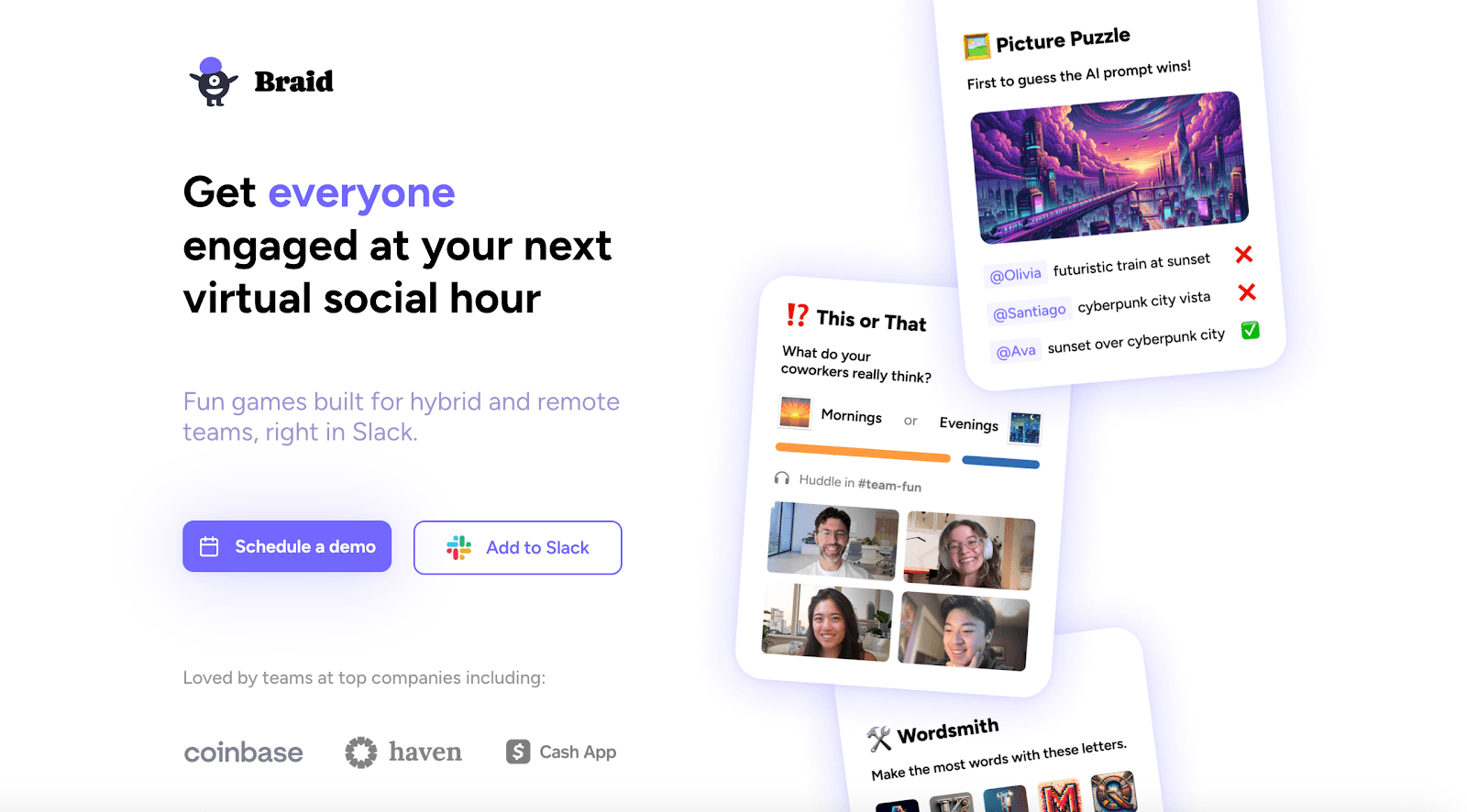Table of contents:
Awkward silences in team meetings? One-word responses on Slack? If you’re managing engineers, you’ve probably seen this before.
It’s not that engineers don’t want to talk—they prefer structured, purposeful conversations over forced small talk. Asking, “How’s everyone’s weekend?” might get you a couple of polite responses, but it won’t spark real engagement.
Instead of pushing small talk, you should create a comfortable environment where engineers feel encouraged to contribute in their own way. That means using low-pressure, structured ways to spark conversations without putting anyone on the spot.
So, how do you do that? Keep reading for practical ways to help your engineers engage—no forced small talk required.
Why Engineers May Be Quiet in Team Settings
Engineers aren’t necessarily quiet—they just prefer structured, purposeful discussions over casual small talk. Many engineers process information internally before responding, making spontaneous conversations feel unnatural or unnecessary.
Here are a few key factors that influence their communication style:
They prefer structured discussions – Engineers engage more when conversations have a clear focus. They’re more likely to contribute to problem-solving discussions than vague, open-ended questions like “How was your weekend?”
Social interaction can be draining – For many engineers, especially introverts, unstructured social interactions can feel exhausting. They communicate best in short, focused bursts and often spend a lot of time in their own heads, thinking through complex problems before speaking.
Written communication feels more natural – Many engineers prefer expressing their thoughts in writing, whether through Slack messages, async discussions, or documentation.
Unclear expectations make participation harder – If a meeting lacks structure or clear cues for engagement, quieter team members may assume they aren’t expected to speak.
Instead of pushing forced conversation, creating an environment that respects different communication styles will naturally encourage engagement.
Using structured discussions, async communication, and well-defined participation methods helps engineers contribute in ways that feel most comfortable to them.
Ways to Get Engineers Talking Without Forcing It
Now that we know why engineers might be quiet in team settings, let’s focus on ways to encourage engagement without making it feel forced. Here are some ways to do it:
1. Encouraging Conversations Without Forced Small Talk
Engineers prefer structured, meaningful discussions over casual small talk. Instead of trying to spark engagement with vague questions like “How was your weekend?”, shift the focus to topics they find interesting and valuable.
Focus on Problem-Solving and Technical Discussions
Engineers engage more when conversations have a clear purpose. Instead of open-ended small talk, try:
“What’s the most frustrating bug you’ve fixed lately?”
“What’s a tool that has improved your workflow?”
“If you could automate one part of your job, what would it be?”
These types of questions encourage thoughtful responses while keeping the discussion relevant to their interests.
Create Dedicated Slack Channels for Low-Pressure Engagement
Some engineers prefer async communication over live discussions. Providing dedicated Slack channels for knowledge-sharing, tech trends, or side projects allows them to engage at their own pace.
Try:
“What’s an underrated programming language that deserves more attention?”
“What’s one tool or shortcut that has completely changed the way you work?”
Make It Easier to Respond with Structured Prompts
Instead of broad, open-ended questions, use structured prompts that make participation easier:
“Which solution do you think is more efficient: A or B?”
“What’s one thing you’d improve about our current workflow?”
By creating opportunities for structured, low-pressure engagement, engineers can participate in conversations without the discomfort of forced small talk.
2. Introduce Fun, Low-Stakes Team Activities
Not every interaction needs to be work-related—structured games and team activities help engineers engage without the pressure of forced conversations.
Instead of awkward icebreakers or mandatory socializing, introducing fun, low-stakes games can make team interactions feel natural.
Use Slack-Based Games to Spark Conversation

For engineers who prefer structured interactions, Slack-based games are an easy way to get conversations started without pressure.
Braid offers fun, low-stakes games that help teams connect without awkward icebreakers or forced small talk. Instead of struggling to fill the silence, managers can introduce quick, engaging activities that naturally get engineers talking.
Here are a few Braid games that work well for quieter teams:
This or That – Quick, low-pressure choices like “Tabs or spaces?” or “Dark mode or light mode?” encourage easy participation.
Word Link – A collaborative word association game that keeps conversations flowing naturally.
Trivia – Engineers often enjoy logic-based challenges, making trivia an easy way to engage them.
Picture Puzzle – A fun way to get engineers working together or individually without the need for small talk.
Make Team Interactions Feel Natural
Instead of relying on casual check-ins, introduce structured, low-effort games that spark discussions organically:
Rotate activities so everyone gets a chance to find something they enjoy.
Keep games short and lightweight so they don’t feel like extra work.
Make participation optional—mandatory fun isn’t fun.
By integrating structured, game-based interactions, you create an environment where engineers can engage on their terms—without the discomfort of forced small talk.
3. Use Asynchronous and Written Communication First
Many engineers prefer structured, written communication over spontaneous verbal discussions. Slack provides a low-pressure way to engage, allowing engineers to process information and respond thoughtfully rather than feeling rushed in meetings.
Here’s how to make the most of async communication:
Leverage Slack for discussions – Engineers often express ideas more clearly in writing. Use dedicated Slack channels for technical discussions, workflow improvements, and knowledge sharing.
Give time for responses – Instead of expecting immediate participation in live meetings, allow engineers to contribute asynchronously. Posting discussion topics in advance lets them prepare, while post-meeting summaries provide a space for additional input.
Use structured prompts – Open-ended questions can feel overwhelming. Instead of asking, “Any thoughts?”, try:
“What’s one thing you’d improve about our current workflow?”
Incorporate quick engagement tools – Use polls and surveys for fast, low-effort responses. Example: “Which project management tool do you prefer?” This encourages participation without requiring long discussions.
Allowing engineers to write at their own pace creates an environment where they feel more comfortable contributing without the pressure of speaking on the spot.
4. Creating Comfortable and Structured Team Meetings
Meetings don’t have to be filled with awkward silence or one-word responses. Instead of expecting spontaneous participation, set up clear structures that make it easier for engineers to contribute without pressure.
Use Structured Check-Ins to Ease Into Discussions
Rather than jumping straight into work updates, a quick, structured check-in can help everyone ease into the conversation. Keep it simple and relevant:
“What’s one win from last week?”
“What’s a challenge you’re working through?”
“What’s something cool you learned recently?”
These prompts encourage participation without feeling forced.
Use Round-Robin for Fair Participation
Open-ended prompts like “Any updates?” can lead to silence. Instead, go around the group and let each person share a short update. This removes the pressure of jumping into a conversation and ensures quieter team members have a chance to contribute.
Allow Engineers to Opt In, Not Be Put on the Spot
Still, not every engineer is comfortable speaking up in meetings. Instead of calling on individuals unexpectedly, you could try:
Letting them signal when they want to contribute (hand-raise feature in virtual meetings).
Giving the option to respond asynchronously if they prefer writing.
Encouraging participation in smaller breakout discussions instead of large meetings.
Engineers are more likely to contribute naturally and comfortably by making meetings structured and low-pressure.
5. Fostering Peer-to-Peer Engagement
Managers play a role in fostering team discussions, but sometimes, the most natural conversations happen when engineers engage with each other rather than leadership.
Creating opportunities for peer-to-peer engagement allows discussions to feel less like formal check-ins and more like organic collaboration.
Here are ways to do this:
Pair engineers for mentorship or knowledge-sharing –Encourage 1:1 learning sessions where engineers can exchange ideas, review each other’s code, or collaborate on new tech stacks. This removes the pressure of speaking in larger group settings.
Set up casual coworking Slack rooms – A dedicated “working together” Slack channel where engineers can post updates, ask for help, or casually share insights on what they’re working on.
Facilitate collaborative problem-solving – Running into an issue? Instead of a private fix, create a culture where engineers feel comfortable brainstorming solutions together. Slack threads, paired debugging, or technical huddles help make engagement a habit.
Leverage code reviews as conversation starters – Rather than treating code reviews as a transactional task, use them as collaborative discussions where engineers can explain their thought process, suggest improvements, and share insights.
Use group challenges to spark discussion – Hackathons, weekly coding challenges, or “bug-bounty” competitions help engineers interact in a fun, low-pressure way that doesn’t rely on small talk.
Creating structured yet informal opportunities for peer-to-peer engagement ensures that discussions feel organic, not forced. When engineers build rapport with teammates, engagement in team meetings and Slack naturally improves.
Build Stronger Team Connections With Braid

Getting engineers to engage in conversations doesn’t have to be complicated; it just takes the right tools. Instead of relying on forced small talk or awkward icebreakers, Braid makes team interactions natural by providing well-defined, engaging ways to connect in Slack.
With games like This or That, Word Link, and Trivia, Braid helps create a low-pressure environment where engineers can participate on their own terms.
Whether it’s a quick icebreaker, a fun problem-solving challenge, or a casual team-building moment, Braid gives teams an easy way to encourage interaction without the discomfort of forced conversations.
Want to see how it works? Schedule a demo with Braid today and bring effortless engagement to your Slack team without forcing small talk!
FAQs About Ways to Get Awkward Engineers Talking
Why do engineers struggle to communicate?
Engineers do not necessarily struggle with communication skills, but they prefer structured, purpose-driven discussions over casual small talk. Many are analytical thinkers who focus on problem-solving rather than engaging in social conversations. Since they often communicate more effectively in writing, they may not interact in the same way as others in verbal discussions.
How do I talk to engineers?
To communicate effectively with engineers, focus on clear, concise topics that encourage problem-solving rather than casual conversation. Using structured discussions, purposeful check-ins, and async communication tools like Slack can help create a more comfortable interaction. Additionally, being mindful of body language in meetings can provide insight into their level of engagement.
How to communicate better as an engineer?
Engineers can improve their conversation skills by participating in discussions, sharing thoughts in written formats like Slack, and explaining things in a structured way. Engineers who take on a leadership role often refine their communication by mentoring others and providing clear, actionable feedback.
Are engineers typically happy?
Many engineers enjoy their work because it involves problem-solving and technical challenges, but their happiness also depends on workplace culture and team interactions. Engineers who have a healthy balance between work and personal life and feel inspired by their work tend to have higher job satisfaction.
How can engineers improve networking skills?
Engineers can thrive in the business world by focusing on technical discussions rather than small talk. A good strategy is to engage with other engineers by sharing insights on engineering problems and solutions. Understanding their own personality traits helps engineers find networking approaches that suit them. Preparing key topics before a networking event can make interactions more meaningful and effective.
Related Posts
Braid Social, Inc.










